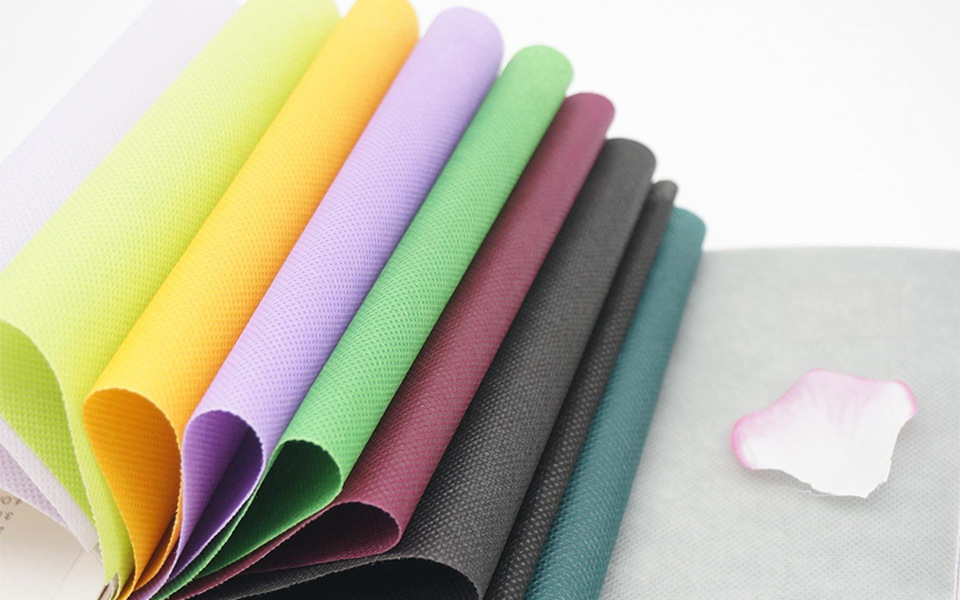When it refers to non woven fabric, actually we are not far from it as there are various types of non woven fabric products around us, such as non woven wallpaper, shopping bags, wet wipes, baby disposable diapers and so forth. It is widely used in many fields such as agriculture, medical industry, packaging, clothing, home decoration and etc. As its appearance and uses have a lot in common with cloth, so it's also known as non woven cloth. In this post, we will introduce the different types of non woven fabrics and the nonwoven fabric manufacturing process with you guys.
Nonwoven fabric is a fabric-like material made from polymer chips, short fibers or filament, boned together by variety of web forming means and consolidation technologies. It is a new fiber product which features super softness, excellent breathability and planar structure. It has the characteristics of short process flow, high output, low cost, rapid variety change, wide range of raw material sources and more. The non-woven fabrics can be divided into 8 types according to different manufacturing processes:
Spunlace process is the application of high pressure water jet to one layer or multi-layer of fiber web, entangling the fibers with each other, thereby reinforcing the web to some extent. It is well-known for its great uses as facial mask fabric, medical non woven fabric, wet wipe fabric, non woven filter fabric and etc.
If you are seeking spunlace fabric for wet wipes, I recommend you to read our 30gsm to 65gsm Quality Formaldehyde-Free Spunlace Nonwoven Fabric for Wet Wipes before making a purchase as it features superior softness, high water absorbency and high security.
This type of non-woven fabric is mainly manufactured in several processes: adding fibrous or sticky reinforcement material into the fiber network, and then reinforcing the network into cloth via heating and cooling.
Airlaid nonwovens can also be called dustless paper or dry paper nonwovens. It uses the airlaid technology to open the wood pulp fiberboard into single fiber state, then uses air flow method to make the fiber agglomerate on the net curtain, and then consolidates the fiber web into cloth.
The manufacturing process of wet nonwoven fabric goes like this: open the fibrous raw material in the aqueous medium into single fibers, meanwhile forming a fibrous suspension slurry by mixing different fiber raw materials, then transport the suspended slurry to a mesh-forming mechanism, and the fibers are laid in a wet state to form a cloth.
Spunbond-type of nonwoven fabric is processed as follows: extrude and stretch the polymer to form a continuous filament, laid the filament into web, then process the web into nonwoven fabric through their own bonding, thermal bonding, chemical bonding or mechanical reinforcement methods.
Melt-blown nonwoven fabric is manufactured by extruding melted polymer fiber through a linear die containing several hundred small holes to form long thin fibers which are stretched and cooled by passing hot air as they fall from the linear die, then the resultant web are blown onto a collector screen forming fined-filtered, self-bond nonwovens. Usually, this type of nonwoven fabric is added to spunbond in order to form SM or SMS webs.
Acupuncture nonwoven is a type of dry nonwoven fabrics. The fluffy fiber is reinforced into cloth by needle puncture.
Stitched nonwoven is another type of dry nonwoven fabrics. The manufacturing process uses warp knitted loop structure to reinforce the fiber web, yarn layer, non-woven materials (such as plastic sheeting, plastic foil and etc.) or a combination thereof so as to form a nonwoven fabric.

Along with the rapid development of nonwoven fabric manufacturing process technology, the different types of non woven fabrics have been widely used around the globe in different areas for producing wet wipes, sanitary napkins, medical masks, cleaning cloth, disposable towels, industrial filters, agricultural shed cloth, carpets and so on. Currently, it is internationally recognized as the environmental-friendly products due to its indoor and outdoor decomposition.
![]()
